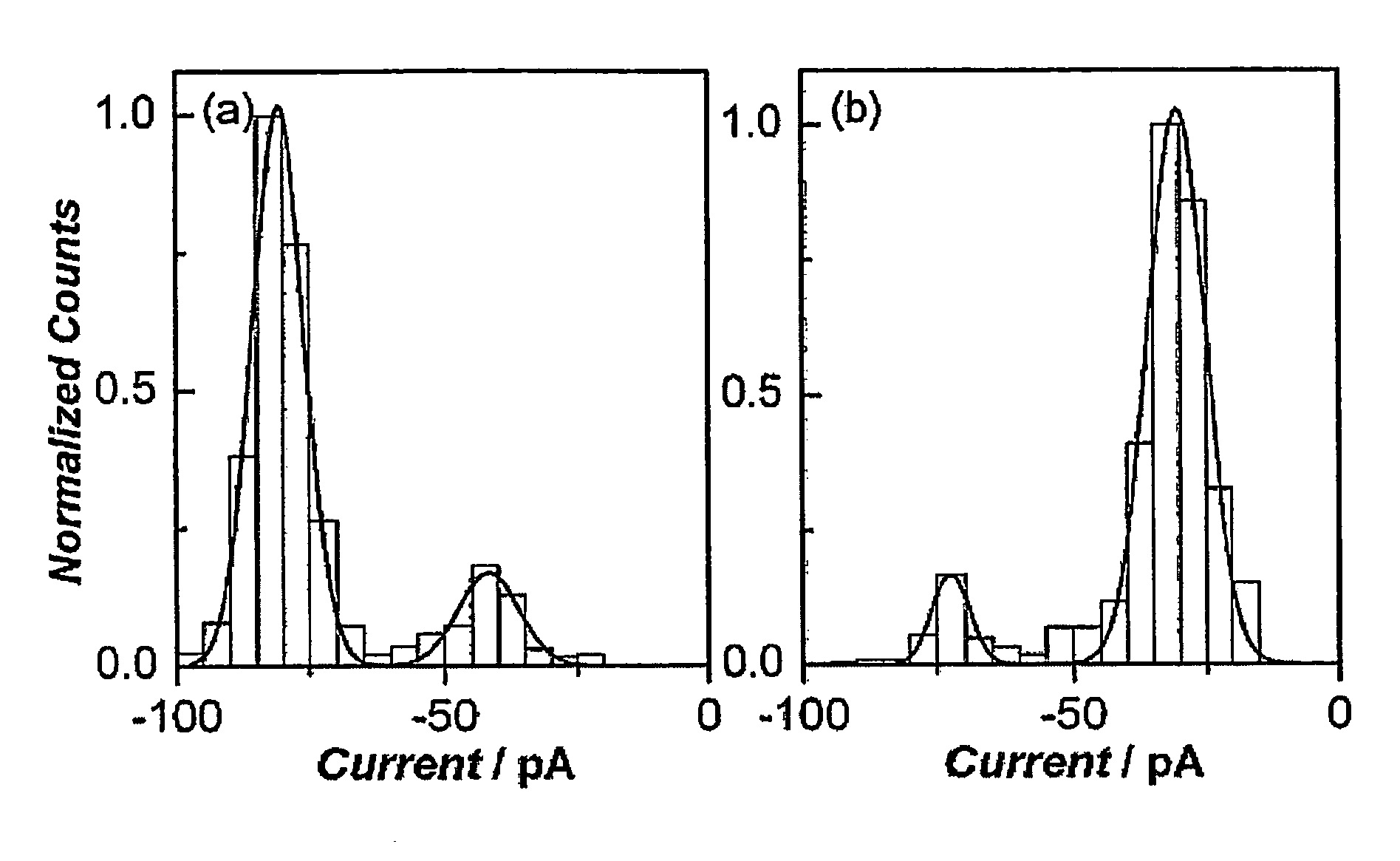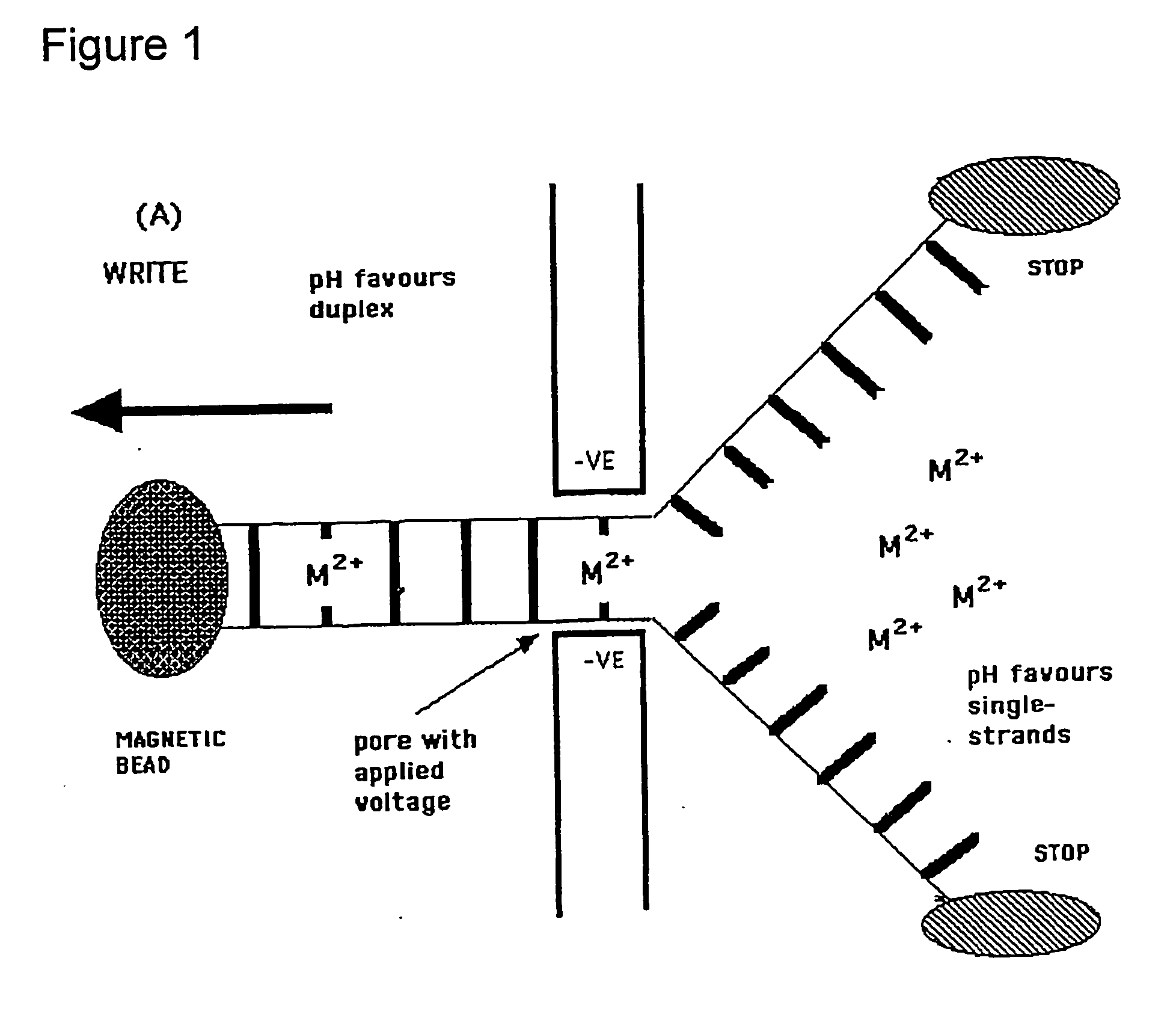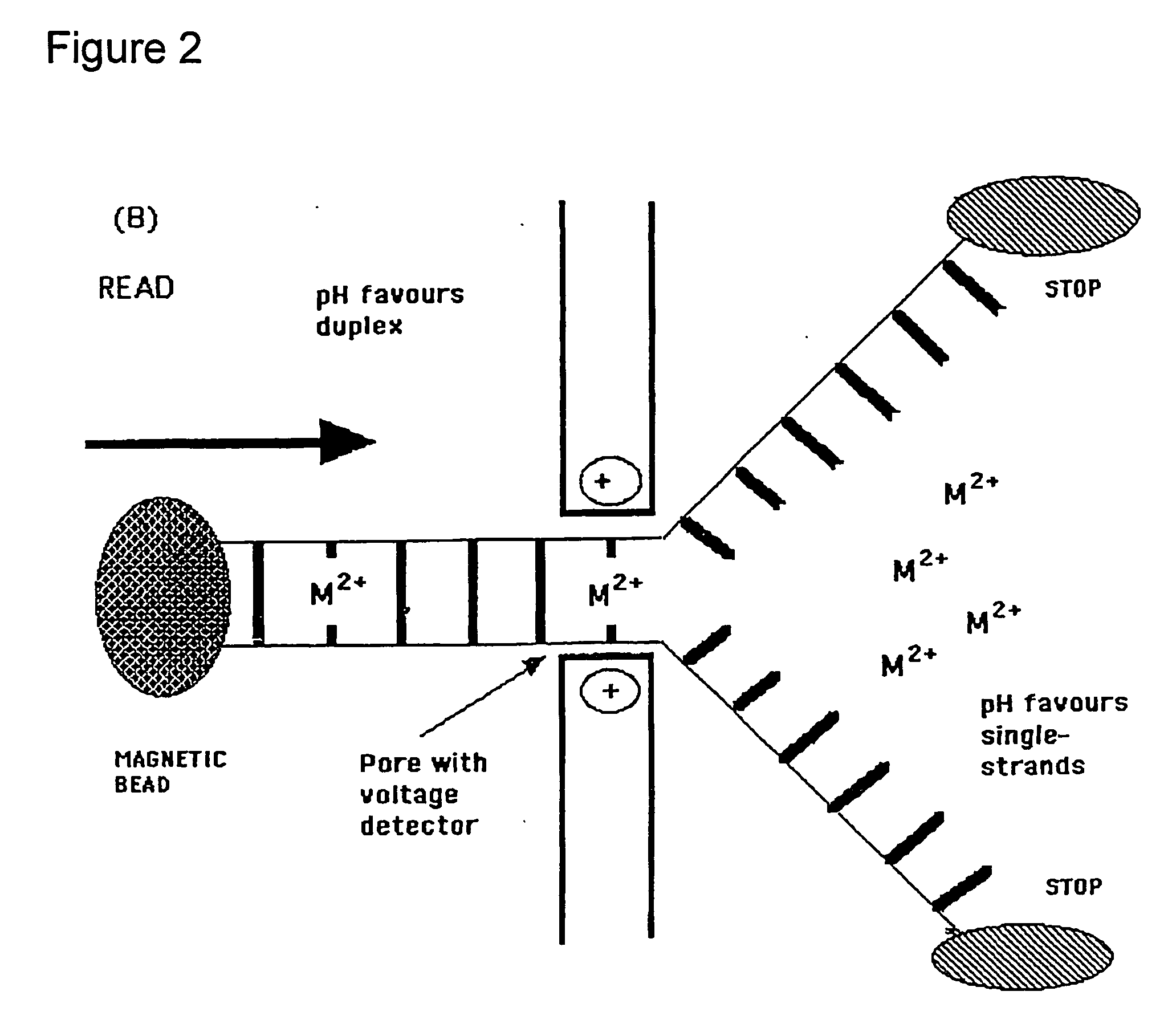Methods and apparatus for molecular data storage, retrieval and analysis
a molecular data and information retrieval technology, applied in biochemical apparatus and processes, nanoinformatics, instruments, etc., can solve the problems that the biochemical methods of “writing” (assembling oligonucleotides) and reading (sequencing) dna have so far not been easily adapted to non-biological memory devices
- Summary
- Abstract
- Description
- Claims
- Application Information
AI Technical Summary
Benefits of technology
Problems solved by technology
Method used
Image
Examples
example
[0042] Introduction
[0043] The following example is illustrative of various aspects of the present invention. As set out in detail below, a 50 base guide strand was synthesized which consisted of a central 10 base probe sequence flanked by two tracts of 20 adenine residues. Target sequences of 10 bases containing up to three mismatches were prepared and hybridized to the guide strand in 1 M KCl. The transport of these constructs through single alpha-hemolysin pores was analysed by measuring the current blockade as a function of time. Complementary ds-DNA takes significantly longer (1100±250 ps) to pass through the pore than a sequence of the same length containing a single mismatch (155±95 μs). Constructs involving 2 and 3 mismatches were indistinguishable from ss-DNA transport. Duplexes containing mismatches unzip more quickly and can be distinguished from those with perfect complimentarity.
[0044] Results and Discussion
[0045] The DNA sequences used are shown in FIG. 7. A strand o...
PUM
| Property | Measurement | Unit |
|---|---|---|
| pore sizes | aaaaa | aaaaa |
| pore sizes | aaaaa | aaaaa |
| diameters | aaaaa | aaaaa |
Abstract
Description
Claims
Application Information
 Login to View More
Login to View More - R&D
- Intellectual Property
- Life Sciences
- Materials
- Tech Scout
- Unparalleled Data Quality
- Higher Quality Content
- 60% Fewer Hallucinations
Browse by: Latest US Patents, China's latest patents, Technical Efficacy Thesaurus, Application Domain, Technology Topic, Popular Technical Reports.
© 2025 PatSnap. All rights reserved.Legal|Privacy policy|Modern Slavery Act Transparency Statement|Sitemap|About US| Contact US: help@patsnap.com



